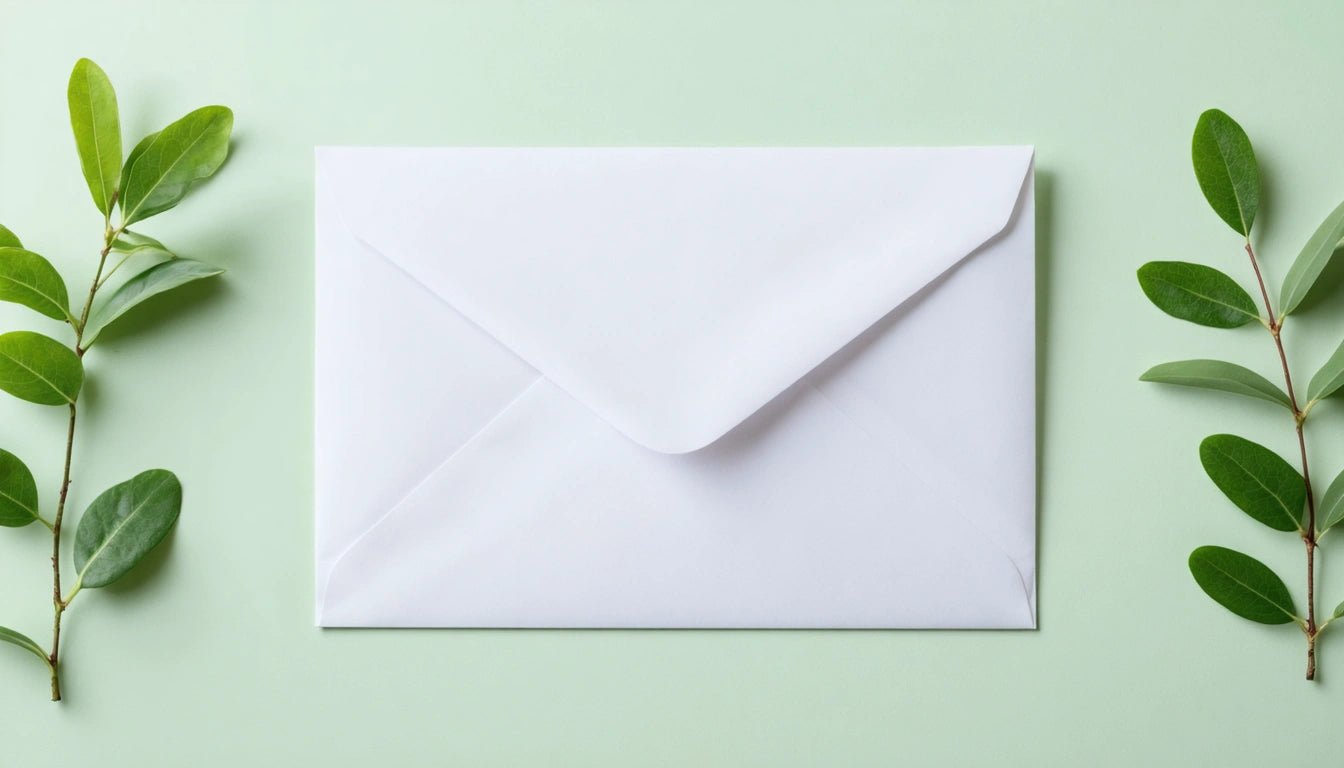Table of Contents
Understanding A7 Envelope Dimensions: What Size Is A7 Envelope
When planning to send greeting cards, invitations, or announcements, knowing the correct envelope size is essential. The A7 envelope is a popular choice for many occasions, but understanding its exact dimensions helps ensure your materials fit properly and present professionally. This guide breaks down everything you need to know about A7 envelope measurements and applications.
A7 Envelope Standard Dimensions
The standard A7 envelope measures 5.25 inches by 7.25 inches (5 ¼" × 7 ¼" or approximately 13.3 cm × 18.4 cm). This size is designed to accommodate A7 cards, which measure 5 inches by 7 inches (5" × 7"). The slight difference in dimensions allows the card to fit comfortably inside the envelope without excessive folding or damage.
It's worth noting that A7 envelopes follow the American stationery size standards, not the international ISO standard. In the ISO system, an A7 would be significantly smaller at 74mm × 105mm (approximately 2.9" × 4.1").
Common Uses for A7 Envelopes
Greeting Cards and Invitations
The A7 size is ideal for formal invitations, greeting cards, and announcements. Its dimensions provide enough space for detailed designs and text while remaining convenient for mailing. Wedding invitations, graduation announcements, and holiday cards frequently use this size for its elegant proportions.
Photography and Art
Photographers and artists often choose A7 envelopes for sending 5" × 7" prints to clients. The standard size makes framing easier as 5" × 7" is a common frame dimension. For those shipping larger art prints, specialized art print mailers might be more appropriate.
Choosing the Right Paper Weight
A7 envelopes come in various paper weights, typically measured in pounds (lb) or grams per square meter (gsm):
- Light (20-24 lb / 75-90 gsm): Economical but less durable
- Medium (24-28 lb / 90-105 gsm): Good balance of durability and cost
- Heavy (28-32 lb / 105-120 gsm): Premium feel, more durable
- Extra Heavy (32+ lb / 120+ gsm): Luxury finish, maximum durability
The appropriate weight depends on your specific needs. For formal invitations or business correspondence, a heavier weight conveys quality and professionalism. For everyday correspondence, medium weight offers a good balance. Some suppliers, like those who provide packaging solutions for various industries, understand that material quality significantly impacts presentation and protection of contents.
Postage Considerations
When mailing A7 envelopes, standard postage rates typically apply, but factors like weight, thickness, and additional features can affect the cost. A standard A7 envelope with a single card inside usually qualifies as First-Class Mail.
For heavier contents or envelopes with embellishments, additional postage may be required. Understanding postage costs before sending your mail can help avoid returns or delivery delays.
Some considerations include:
- Weight: Heavier paper stock or multiple inserts increase weight
- Thickness: Bulky items may require non-machinable surcharges
- Size: Square or unusual shapes often incur additional fees
- Rigidity: Very stiff materials may require special handling
For precise information on current rates, check with your postal service or determine the right number of stamps needed for your specific mailing.
Alternative Envelope Sizes
While A7 is popular, other envelope sizes might better suit certain needs:
- A2 (4.375" × 5.75"): For smaller note cards and thank you notes
- A6 (4.75" × 6.5"): For announcements and smaller invitations
- A8 (5.5" × 8.125"): For larger cards and booklet-style invitations
- A9 (5.75" × 8.75"): For oversized greeting cards
- A10 (6" × 9.5"): For large announcements or certificates
For shipping larger items, consider padded envelopes or bubble mailers which offer more protection.
When selecting between sizes, consider not just the dimensions of your content but also presentation. A card that fits too loosely in an envelope may shift during transit, while one that's too tight may be difficult to insert or remove without damage.
Practical Tips for A7 Envelope Selection
When purchasing A7 envelopes for your project, consider these practical recommendations:
- Order samples before buying in bulk to verify size compatibility with your cards
- Choose colors that complement your card design
- Consider the envelope flap style (pointed, square, etc.) for aesthetic impact
- For formal occasions, look for envelopes with gummed closures rather than self-adhesive
- Request extra envelopes (10-15% more than needed) to account for addressing errors
- Check if your printer can handle envelope printing before attempting to print addresses
Proper addressing techniques ensure your correspondence reaches its destination efficiently. For creative presentations, some even incorporate DIY packaging ideas to make their mailings more memorable.
Understanding envelope dimensions like the A7 size helps ensure your correspondence looks professional and arrives safely. Whether for business or personal use, selecting the right envelope size is a small detail that makes a significant difference in presentation and functionality.



















